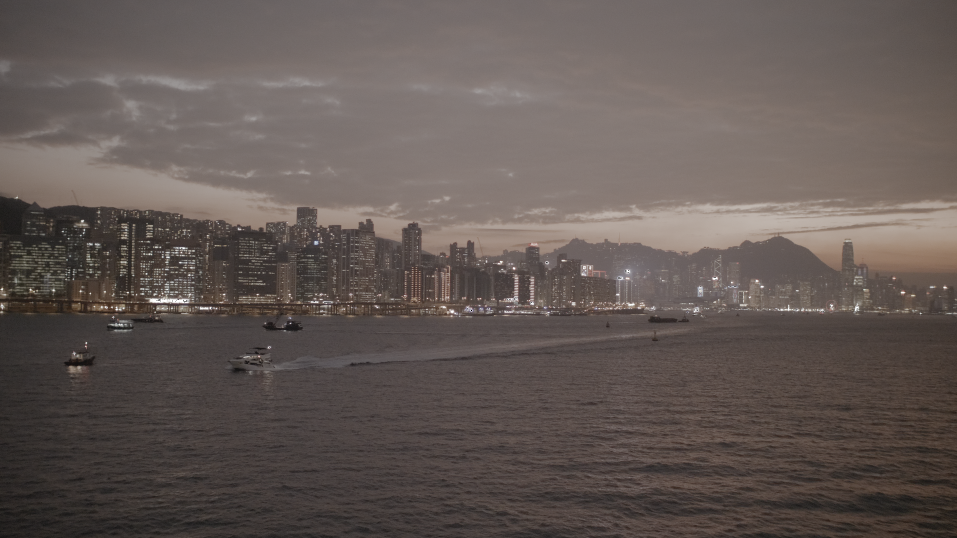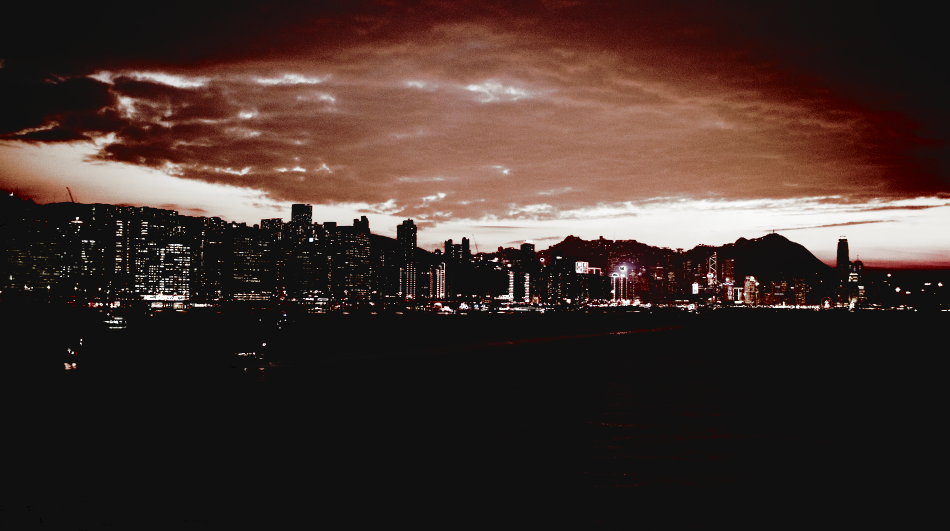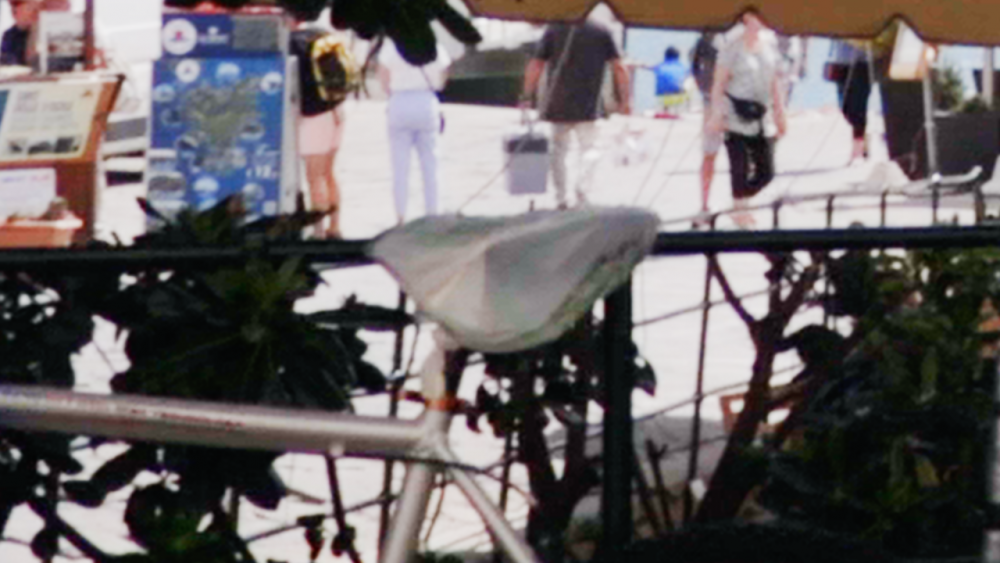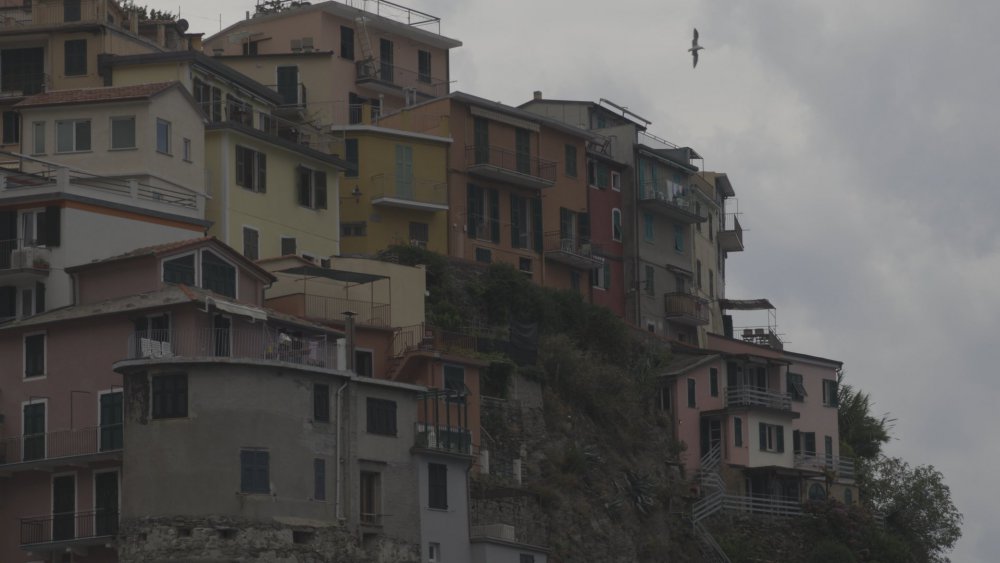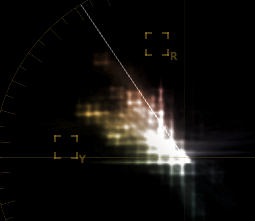-
Posts
7,984 -
Joined
-
Last visited
Content Type
Profiles
Forums
Articles
Everything posted by kye
-
They could use sensors from Fairlight and leapfrog the generic video look that almost all Sony-sensor cameras give these days. Now that really would be something.
-
Starting from scratch might be an advantage, especially considering they don't have a cine line to protect, or internal departmental politics to navigate. Canon has made a mess of their prosumer offerings, with potentially the architecture of the camera being a limiting factor, whereas starting fresh gives you an opportunity to design things from the ground up for the way that things work now, rather than either having to design custom chips (ala ARRI) or having to try and shoehorn new chips into a legacy architecture (ala Canon). Blackmagic did well by essentially designing multiple cameras from the ground up to fit underserved niches, but Nikon would be doing that with (I assume) much more resources, stronger relationships with industry, a proven manufacturing capability, large professional servicing network, a large customer base with brand trust and loyalty, and a huge body of lenses to draw from.
-
The more I learn about each aspect of the image pipeline, the more I realise that everything matters. If you have a camera like the A7S3 where it's a good sensor, good image processor, and good codec, then the fact that it's 8-bit isn't too bad because the other things are fine. I've run into issues shooting 8-bit C-Log with the Canon XC10. This should be a reasonable example of 8-bit done well as it's a Canon cine/video camera with 4K 300Mbps 8-bit codec, but alas.... Here's this shot, which I will admit is underexposed: which gives us this when we convert the colour space: but unfortunately, if we zoom into the seat in the bottom left: Is this an 8-bit issue? Is this a poor codec issue? I'll leave that as an exercise for the reader. Let's take another example: Which after a transform gives this: and look at the noise! Now, is that ISO noise? 8-bit quantisation? a "poor" 300Mbps codec on a Canon cine camera? This is the vector scope, which clearly shows the 8-bit quantisation: Yes, this is an extreme example with a low-contrast scene, a flat log profile, and 8-bit codec, but this was a $2K Canon cine camera with a 300Mbps codec. So, I replaced it with a GH5, with the decisive factor being the internal 10-bit. Let's take this image here, a 10-bit HLG frame with almost zero contrast: and actually try to break it by applying more contrast than you would ever use in real life: and it holds together. Is that the 10-bit? Is that the 150Mbps 422 codec? Is that the fact it's a downsampled 5K image? Who knows, but it's a night and day difference where with an 8-bit example I struggle to get a good image from a real world shot and a 10-bit image where I can't break it even if I tried. I like to think about it like this - 8-bit can be good enough if you have a good enough implementation of it (unlike the XC10) but a good 10-bit implementation will give you security that you're not going to run into bit depth issues, so for me it's a safety thing.
-
Of course it is better to know where a problem is and fix it properly, but let's not kid ourselves - the OP doesn't even have time to listen to the final edit to see where any problems might be, so the basket of solutions is pretty empty when there is such a lack of care-factor, especially considering that poor video quality is tolerable but poor audio makes something unwatchable. Besides, any half-decent limiter can put a pretty heavy limit on a signal without it having much/any perceivable effects. Anyone familiar with tape saturation would know that this type of limiting can be very sonically benign. I used to use them for compression and sonic effects in writing electronic music and you'd have to go seriously out of your way to push it hard enough to get anything sonically interesting in terms of distortion. I read somewhere that there is a bone in the ear that we hear through and that it causes high levels of second harmonic distortion, which is then removed by the auditory processing parts of the brain. I'm not sure if that's true, but it's pretty obvious that even-order harmonic distortion is orders of magnitude less offensive than odd-order harmonic distortions, so anything that can create even instead of odd harmonics will be far more pleasing, or can be used so much more before becoming unpleasant.
-
@zerocool22 Why not just use a limiter? Not sure about FCPX, but Resolve has one built into every track, and every bus, and also the master output.
-
Thanks, I've asked this question previously but hadn't gotten a definitive answer. A couple of things that are interesting from that spec sheet are: It can do 100fps It can do 100fps with rolling shutter and 50fps with a global shutter I wasn't aware that either the BMMCC or OG BMPCC have either 100fps or a global shutter enabled - does this mean that the sensor from all those years ago is only semi-utilised? Wow. Seriously Blackmagic - do an update on these cameras!! I see minimalism has found another follower...
-
Do you have any links outlining the dual-gain architecture of the sensor? Some time ago I looked for more information on that aspect and couldn't find anything, and am curious to read more about it 🙂 I definitely agree that small sensor doesn't have to mean vintage look. Lots of wider aperture lenses are able to give a decent amount of background separation. If anyone isn't clear on this, then the following might be of interest: http://www.yedlin.net/NerdyFilmTechStuff/MatchLensBlur.html
-
This came up in my feedlot sure if it's been posted already but a search didn't reveal any hits: There's some great info in the comments about equipment, settings and process.
-
@zerocool22 When you play the video you can see levels via the Mixer section of the edit page (it's the panel bottom-right corner with levels just going into the yellow band on the main mix) and they show if something is close/clipping via colour. You have to enable the Mixer via the button at the top-right, similar to how you turn on and off the Inspector window. Also, if you have a few audio tracks you might have to drag out the width of the Mixer panel so you can see each track. It won't show if an audio clip is clipped on the original recording, although I wouldn't think this is something you'd need to refer to frequently, especially considering the damage has already been done, but maybe there's something else going on.. In a sense, the more useful measures are if a track is clipping (which is recorded audio + clip volume + track volume) or if the whole mix is clipping. It's a similar thing in the Fairlight page, although you have more places to see individual levels for tracks and busses etc. Was there something specific you are doing, or a specific situation you are in?
-
Wonderful! I think there's a few interesting points here. Firstly, I disagree when you say the OG isn't more gorgeous than the 4K. There's a view that because they all shoot RAW that they're the same because you can make RAW look like anything, but that's simply not true. For example, even in colourist circles the ability for Steve Yedlin to emulate film is often viewed as practically impossible, and Steve even says in his blog that it's not possible with the limited tools available (referring to Resolve and Baselight) and he had to write his own custom software to do it. But setting aside professional colourists for a second and getting to the people who would realistically buy a BM pocket cinema camera (P2K, P4K, P6K, or P6KP), these people aren't likely to be able to grade the P4K to look like the P2K, or vice versa (and let's be honest - a great proportion of them only go as far as applying a LUT). So while in theory the P2K isn't more gorgeous than the P4K, it is in practice when the average user has next to no ability to colour grade. Moving into the comments about resolution and sharpness, I think this is something that relates to marketing and to ability to colour grade as well. It relates to marketing in a couple of ways. Firstly, people often pick up the P2K for a retro look, because they're been brainwashed by TV companies to think that more resolution is more modern, when in reality most cinemas still project in 2K. In addition to this they often pair the P2K with vintage lenses, which of course give a vintage look, which lacks sharpness. However, in fact the P2K and BMMCC can just as easily be paired with modern cinema glass, and is by people who aren't after a vintage look. Secondly, as people watch more and more content from YouTube rather than content shot on Alexas and graded by professional colourists, people get used to a sharper look as the default look. Once again, this is marketing because the default look is over sharpened because the TV manufacturer who made your camera is baking that look into the camera in order to manipulate you into wanting a HD FHD 4K 8K TV. Sharpness also comes down to colour grading, and this is something that I am experimenting with at the moment. The P2K and BMMCC are very soft straight out of camera, which is fine if you know what you're doing, but alas, these files aren't being graded by professional colourists, they're being graded by people who don't even understand how LUTs work. On top of this, sharpening is a whole art form but is almost never discussed and there are basically no tutorials. Why? Because your TV manufacturer camera oversharpens rather than under sharpens, and instead of learning to sharpen in post you learned to use vintage lenses and diffusion filters to get a sensible level of sharpness.
-
One thing that struck me from the tests was how neutral the over and under exposures are. That's absolutely not the case on most other cameras, and I speak from experience here because I have routinely exposed things poorly in the past and then suffered in post when things didn't behave how I anticipated/hoped they would! Once again, the cameras that most remind me of this trait is the original BMPCC and BMMCC, which use very little highlight rolloff, so the way you use them is to ETTR and pull things down in post, and they look very similar (I did tests), at least when overexposing things anyway, if things are underexposed then the results aren't so good. It might even be that the usability of the DR of the Alexa is more useful than the sheer amount of it.
-
Simply gorgeous image... and it was shot in Prores 422, not even HQ!
-

Disappointing Panasonic GH5 Mark II specs leak in Japan – Where is the GH6?
kye replied to Andrew Reid's topic in Cameras
What if there is a shock discovery that our GH5 and MFT gear doesn't all stop working after a certain date? What if my 14mm f2.5 pancake lens isn't watching the Panasonic website and gradually counting down to oblivion? What if I could keep using the 5K 4:3 anamorphic de-squeezing, downsampled 4K60, high-bitrate 10-bit ALL-I, IBIS, reliable, long-battery life, ergonomic, battle-tested camera that I already own? Well.... that would mean, in that crazy reality, if we even dare to contemplate, the other half of this thread is moot. Now excuse me while I go complain on the cutlery forums that I'm about to starve to death because my spoons haven't been upgraded in 1000 years and still don't automatically extend to 'focus' on my food and I still have to do it manually! -
I've heard about that, but haven't read up on it enough to understand it. Wasn't it a vocabulary thing?
-

Disappointing Panasonic GH5 Mark II specs leak in Japan – Where is the GH6?
kye replied to Andrew Reid's topic in Cameras
Found this... it looks like the full specs. https://www.43rumors.com/leaked-the-full-gh5ii-specs/ Some interesting things in there, like 4K60 with 10-bit, but I suspect the aftertaste will be bitter for most people reading this. -
You wouldn't catch me hoping that a 60k investment in a rapidly changing technological industry was still good in a decade! I think the entire film and photography industry grew up in a little fantasy bubble about the way the world works because they started with film. Film was standardised and so that meant that any advancements were compatible with your camera and you were going to have to buy new film as you used it anyway. Cost of upgrading image quality = 0. Film was standardised and so that meant that your old camera was still good, basically forever, and was (almost) immune to obsolescence through innovation. I say almost immune because stills camera manufacturers started inventing automatic features like auto-exposure and auto-focus which made people buy their cameras and lenses over and over and over again, but the film industry was immune even to this due to the manual workflows that the industry was based around (and still is). Obsolescence of old equipment = 0. These two things disguised the fact that buying cameras and lenses are investments in technology and technology is the most fertile ground for planned obsolescence that exists. No, ARRI aren't deliberately driving the value of your investments into the dirt, but every manufacturer that makes TVs certainly is. The evidence of this is the slow-motion car accident that is happening which is slowly bankrupting cinema chains, a computer company getting into the telephone industry and sending photography companies bankrupt, and the rise of online streaming services and decline of TV, etc.
-

Disappointing Panasonic GH5 Mark II specs leak in Japan – Where is the GH6?
kye replied to Andrew Reid's topic in Cameras
What are the specs on the current GH5 sensor? I'm wondering if they went all-out and implemented everything the sensor could do, would it give any new modes etc, or does the current GH5 utilise the sensor completely? -
Good points, although there is the odd production that takes place outside of course. In terms of the ALEXA Mini LF not being worth much to the industry in 10 years, I'm not so sure. The real push in the industry for more than 2.5K (2K after debayering) is the move to VFX where more resolution is useful, but we reach the limits of human vision (for normal viewing situations anyway) around 2K, so the 6K capture for VFX to deliver in 4K should be fine as long as human vision doesn't radically improve. The 'gotcha' with that statement though is alternative formats, like VR, which are viewed by the eye at a much wider FOV and therefore require a lot more resolution in the area being viewed to keep the same FOV for each pixel. This is the current limit of 360 cameras - they sound great at 4K but when you punch in to view a 90degree FOV (roughly a 24mm lens) then you're now looking at a 1K image. So yeah, if we're strapping two cameras back to back with fisheye lenses then you'd be wanting that UMP12K rather than a 4K camera for sure. Of course, you'll also want deep DOF and the image planes to be as close together as possible (or you'll want three cameras 120 degrees apart) and so this leads to a very different case where the cinema camera form-factor is no longer the one you'd prefer, going in favour of the 'eye on a stick' form factor.
-
There may be a third factor at play, although it would be invisible to film-makers. That would be where clients have a keen sense of what the image they want looks like, and they learn that all the examples of the shows they like were shot on the Alexa, so they just know to ask for that. Sure, they wouldn't know what the letters "DR" are as an acronym, and they wouldn't know what "Dynamic Range" means as a pairing of two words, but they might know what it looks like. One example of that is how women have more refined perception of colour than men, meaning they see clearer than men do, but mostly won't know the technical terms. Most of the people I run into in real life that have a honed sense of taste / aesthetic such as visual artists, interior designers, etc have very astute perception but lack the technical vocabulary to explain it.
-
For a 2s shot, yeah, use a GoPro, or someones phone for that matter. Absolutely. Reliability is critical when you have so much at stake. The cost of running a real set is many/tens/hundreds thousands of dollars an hour. Ironically, once again it's something other than image quality coming into the picture. This time I can understand, but when it's marketing, or the extra pixels that aren't really that visible, then it's a source of greater frustration 🙂
-
Nice work, that's a convincing film grade with the lens aberrations, the grain, the unstabilised motion, and the colours pushed to that level of saturation. Also, totally normal behaviour for people just chilling in the park lol.
-
This is my problem. Whichever pocket I check, it's in the other one. With it being so hard to find it's practically like I don't even own one at all! 🙄🙄🙄
-
It's not even 4K. I mean hellooooooo... 2012 called and wants it's camera back!
-
What a great video! Cool song and nice skating, it's like a California groove video but in a slightly different direction. The image is really nice too. I don't look at it and think it's lacking, which seems to happen with less and less cameras as time goes on 🙂
-
The C500ii gets 13.1 stops, also not that far behind: https://www.cined.com/canon-c500-markii-lab-test-dynamic-range-latitude-rolling-shutter/ Of course, combined with the Alexas colour science and that incredible latitude, the total package is really something else. Perhaps the biggest challenge in the camera market is that each camera that has a significant strength is marred by being absolutely terrible in four other ways. It's rare for a camera to be the best, or even in the top-tier, in every category. Although I suppose that the Alexa has its share of flaws - size, weight, and price being a few that quickly come to mind!


